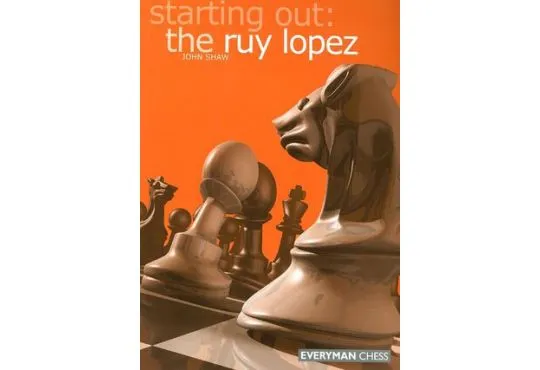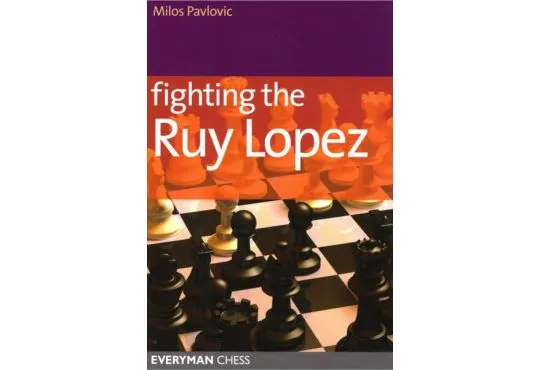Up Your Game With The Ruy Lopez Opening
The Ruy Lopez Opening (sometimes called the Spanish Game) is one of the oldest chess openings. It’s a defense to the move 1.e4, and its first position is reached after 1.e4 e5 2. Nf3 Nc6 3. Bb5
We’ll start off by looking at some of the opening moves - by which we mean the moves at the start where both players fight for control of the center, develop their pieces and get their Kings castled. Since there are many variations, including some quite early into the line, we’ll focus first on the moves played in an old game, then later briefly touch on other possible variations.

After 3.Bb5 , play has followed a logical path: each side has started with a central pawn and the development of a knight. White has moved their light squared bishop and prepares to castle.
Play usually continues 3…a6 4. Ba4 Nf6, although 3…Nf6, the theoretically important Berlin Defense is also possible. 3…a6 4.Bxc6 dxc6 is the Exchange Variation, with an early eye towards an ending, but it’s not an easy way to win a pawn: 5.Nxe5? is met by 5…Qd4!

Exploring Ruy Lopez Opening Ideas
Let’s explore some typical ideas by playing through a sample game:
After 1.e4 e5 2. Nf3 Nc6 3. Bb5 a6 4. Ba4 Nf6 5. O-O Be7
(5…Nxe4 6. d4 would instead introduce the Open Ruy Lopez), White plays 6. Re1 (Diagram).
By protecting e4 (as with 6. Nc3 or 6. d3), White now threatens Bxc6 followed by Nxe5, so Black must play …b5 or …d6. This is a theme to remember in the Ruy Lopez; often both e-pawns are hanging.

6…b5 7.Bb3 d6 8. c3 Na5 (Diagram). Each side prepares a strike at the center; with c3, White prepares d2-d4 and opens c2 for the Bishop. On the other hand, Black prepares the typical …c7-c5.
The …c7-c5 advance has also been prepared by the move …Nc6-b8, known as the solid Breyer Variation. The game continued: 9. Bc2 c5 10.d4 Qc7 11.Nbd2 O-O 12. h3 (Diagram below)

As Black prepares the Queen to make use of the soon-to-be-opened c-file, White prevents …Bg4 and aims to continue development with Nf1 (a typical maneuver to d5/f5 via e3/g3), Be3 and Rc1.
Tension In the Center
In the next few moves, the tension between the central pawns will be defined. This is important to take note of in our study, as the resulting structure will often determine the nature of the struggle to follow, particularly in regards to plans and piece placement.

12…cxd4 13. cxd4 Nc6 (centralizing the Knight, and discouraging the intended Nd2-f1 via pressure on d4) 14. Nb3 (Diagram) (If 14. Nf1? Nxd4 15. Nxd4 exd4, when 16. Qxd4? is met by 16…Qxc2.)
14…a5 15. Be3 a4 16. Nbd2 Nb4 17. Bb1 Bd7 Hoping to play …Rc8 and …Nc2 18. a3 (not giving time for Black to use the c-file)


18…Nc6 19.Bd3 (Diagram, Right)
White has prevented any c-file counterplay, and now b5 is weak. 19…Qb8 20. b4 axb3 21. Qxb3 (Diagram, Left) As both sides complete development, we leave the realm of the opening.
The position remains objectively balanced. However, Black later mistakenly dissolved the central pawn tension, when the active White pieces were better prepared for the new, open structure. White developed an initiative and eventually a decisive attack in the game Boleslavsky - Goldenov, USSR Ch 1947.
-
 CLEARANCE - Navigating the Ruy Lopez - Fabiano Caruana - Volume 2 A World-Class Player ExplainsSpecial Price $15.00 Regular Price $33.95
CLEARANCE - Navigating the Ruy Lopez - Fabiano Caruana - Volume 2 A World-Class Player ExplainsSpecial Price $15.00 Regular Price $33.95 -
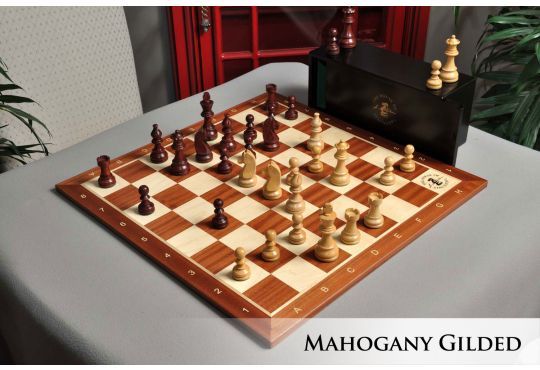 Free Worldwide Shipping
The Championship Series Chess Set, Box, & Board Combination Enjoy Savings of 23% Off MSRP When Purchased as a Combination
Free Worldwide Shipping
The Championship Series Chess Set, Box, & Board Combination Enjoy Savings of 23% Off MSRP When Purchased as a Combination$297.95
Starting at $229.00
To $308.95
Since this game was played (1947), there have been many developments in opening theory, even specifically within the Ruy Lopez opening. Let’s leave this “Chigorin” set-up (with …Na5, …c5 and …Qc7), and turn our attention to some other notable variations of the Ruy Lopez.
This exploration will not be exhaustive; entire books have been written on this opening, and each section should serve primarily as an introduction. The reader is encouraged to continue a deeper study of whichever variation looks attractive to integrate into their playing repertoire.
The Marshall Attack
One of the most notorious variations in the Ruy Lopez is a pawn sacrifice offered by the Black side, named the Marshall Attack (or Marshall Gambit) after Grandmaster Frank Marshall, who first played the idea against Grandmaster Jose Raul Capablanca in 1918.
Though Marshall lost that game, the gambit has remained the object of much curiosity and analysis at the highest level for decades. In fact, there’s an entire family of Ruy Lopez opening variations named the anti-Marshalls, aimed specifically at move orders in which White avoids the gambit altogether. Let’s take a look at how we reach the Marshall positions.
After 1. e4 e5 2. Nf3 Nc6 3. Bb5 a6 4. Ba4 Nf6 5. O-O Be7 6. Re1 b5 7. Bb3 Black plays 7…O-O, when 7…d6 could still have reached some other main lines of the closed Ruy Lopez.
White may logically continue with 8. c3 (diagram), aiming for d2-d4 and opening c2 for the B3-Bishop as we’ve already seen. Next is 8…d5!

We now see why Black has delayed the d-pawn; the central strike comes
before White’s d2-d4. After 9.exd5 Nxd5 10.Nxe5 (diagram) , it might seem that Black has blundered their e-pawn, forgetting our warning about mutually-hanging pawns at e4 and e5.
However, Marshall, after 10…Nxe5 11. Rxe5 claimed compensation for the sacrificed pawn: While it will take some time for the White Queenside to untangle, Black can develop quickly towards the Kingside.
11…c6 and 11…Nf6 are some of the main responses (the d5-knight was hanging), with further ideas including …Bd6 to gain tempo on the Re5, or a quick …Qh4 to target h2. White will have to work hard to parry threats and catch up in development. Have fun exploring this one!
Exchange Ruy Lopez
Perhaps one of the oldest variations in the Ruy Lopez openings, White has tried (after 1.e4 e5 2. Nf3 Nc6 3. Bb5 a6) 4. Bxc6! dxc6 (diagram). Of course the B5-Bishop was threatened, so the capture suggests itself as a way to avoid losing time. It must be noted, however, that losing the powerful light-squared bishop (which we’ve often seen dominating diagonals such as a2/g8 or b1/h7) means White is not playing in the most ambitious way.

In master practice, Black has equalized with the Bishop pair, but White is not without ideas. Former World Champion Emanuel Lasker was among the notable proponents of the variation, with none other than Bobby Fischer reviving its popularity years later.
White’s argument is essentially to seek an endgame. With a later d2-d4, White’s d pawn will be exchanged for the e5 pawn. The resulting structure is a 4 v 3 Kingside pawn majority. In the long term, White will attempt to use this majority to create a passed pawn. Note that Black’s 4 v 3 Queenside majority will not be as effective in creating a passed pawn, given the doubled c-pawns.
Recall that 5.Nxe5? does not win a pawn due to 5…Qd4! White instead will continue with
5. O-O or 5. Nc3, when often Black covers e5 with 5…f6 or a piece on d6. If you’d like to cut down on theoretical study, or you’d simply like to enter an ending from the start, this variation may be worth taking a further look at.
Berlin Defense
At the end of the 1990s, World Champion Garry Kasparov needed a challenger to play a match against him for the title. After a spell involving some uncertainty and confusion, Grandmaster Vladimir Kramnik emerged as the challenger, with the match starting in October 2000.
Kramnik won the match, defeating Kasparov with a score of 8.5 - 6.5, by winning two games, drawing thirteen and losing none. His crucial defense against Kasparov’s 1.e4 was the Berlin Defense of the Ruy Lopez. Of the four games in the match in this variation, Kramnik defended them all, with the reigning World Champion unable to crack the now-famous “Berlin Wall.”

This variation is considered key to Kramnik’s victory, and from that moment it has been the focus of much theoretical discussion and analysis. After 1.e4 e5 2. Nf3 Nc6 Bb5, Black opts immediately for 3…Nf6 (diagram), attacking e4 instead of the B5-Bishop with 3…a6.
4. O-O follows, daring Black to capture, with …Nxe4 (obliging).
With 5.d4 White wants to open the e-file, imagining a potential Re1 if the King remains on e8. 5…Nd6 Black vacates the e-file with tempo on the B5-Bishop (which was not asked to move by the a-pawn!) 6. Bxc6 dxc6 7.dxe5 (recovering the pawn) 7…Nf5 8.Qxd8+ Kxd8 (diagram below).

In many ways, this is the starting position for the Berlin Defense; let’s think about some key ideas. White, having castled, has a slight lead in development and King safety. Meanwhile, Black will tuck away their King and try to use their bishop pair.
Boring Berlin
Though it may seem to constitute a simple space advantage, the e5 pawn may also find itself a bit overextended. White must often protect it with pieces, for example by playing b3 and Bb2. On the more active side, a common plan for White is to transfer the B1-knight to the Kingside, and to expand with moves such as h2-h3 and g2-g4.
Although nowadays some strong players dismiss this variation as the ‘Boring Berlin Ending,’ there are still many rich possibilities to investigate for both sides. Even so, many still aim to avoid the line altogether when handling the white pieces. One way to do this, after 3…Nf6, is to simply play 4. d3 (instead of castling), safeguarding e4 straight away. Typical play after 4. d3 may include …Bc5 for Black, and c2-c3 / Nbd2 for White, with a bit more play compared to the quick Queen trade.

Open Ruy Lopez
One of the most active ways to play the Ruy Lopez is to quickly capture on e4 (as in the Berlin variation, but first playing 3…a6), initiating what is known as the Open Ruy Lopez. The variation arises after the moves:
1. e4 e5 2. Nf3 Nc6 3. Bb5 a6 4. Ba4 Nf6 5. O-O Nxe4 (diagram).

Play usually continues 6. d4 b5 7.Bb3 d5 Black allows the capture of e5, instead prioritizing development. 7…exd4? is too materialistic anyways; White will happily play 8.Re1 and enjoy an advantage based on the open e-file and active a2/g8 diagonal. 8.dxe5 Be6 (diagram).
Theory continues far further than the diagrammed position, including some possible alternatives even in the few moves shown to this point.
However, we can already assess some key characteristics of the struggle in the Open Ruy.
The center pawns (d5 for Black and e5 for White) are not blocked by enemy pawns, and so the center is of a dynamic, or mobile nature. Blockading the enemy pawn (as with …Be6 for Black, or potentially occupying d4 for White) may keep some threats at bay, but a timely push (i.e. …d5-d4 or e5-e6) can often bring a strong initiative to the executing side.
-
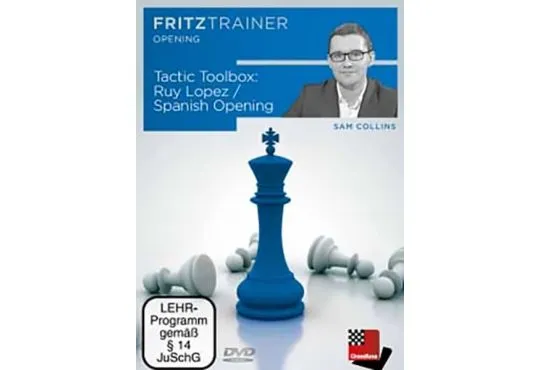 CLEARANCE - The Tactic Toolbox - Ruy Lopez / Spanish - Sam CollinsSpecial Price $15.00 Regular Price $30.95
CLEARANCE - The Tactic Toolbox - Ruy Lopez / Spanish - Sam CollinsSpecial Price $15.00 Regular Price $30.95 -
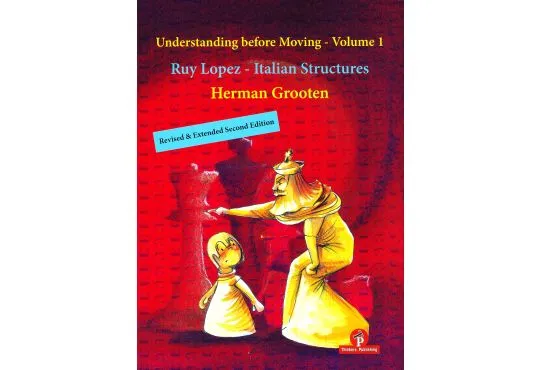 Understanding Before Moving - Volume 1 - Ruy Lopez and Italian Structures Extended Revised Second Edition$32.95
Understanding Before Moving - Volume 1 - Ruy Lopez and Italian Structures Extended Revised Second Edition$32.95
It may seem that Black will face difficulties for not having castled yet, but with a proper handling of the position, these positions can always contain three results. If you take up this variation, be sure to play dynamically and for active pieces. Eventually, (as in many other variations of the Ruy Lopez), removing the c6-Knight and playing …c7-c5 may represent a general, short term goal to execute.
Frequently Asked Questions
Try playing a few games; you may notice some positions feel more natural to you than others; go for variations you can play more easily
Firstly, there are many variations in the main line (closed) Ruy Lopez that have been omitted for space. If those don’t suit you either, you can simply try a different defense to 1.e4 altogether!
Just as important as playing, is analyzing your games. Find where the position started getting out of control, and compare to master games in the same line. It can be quite useful to see how a strong player handles your positions; take notes to use similar ideas in your own games!
Bibliography
Shaw, J. (2003). Starting Out: The Ruy Lopez. Everyman Chess.
Soltis, A. (1992). Chapters 1-4. In Opening Ideas and Analysis for Advanced Players (Vol. 2, pp. 1–81). essay, Chess Digest.
Suetin, A. (1991). The Complete Spanish. Henry Holt and Company, Inc.





